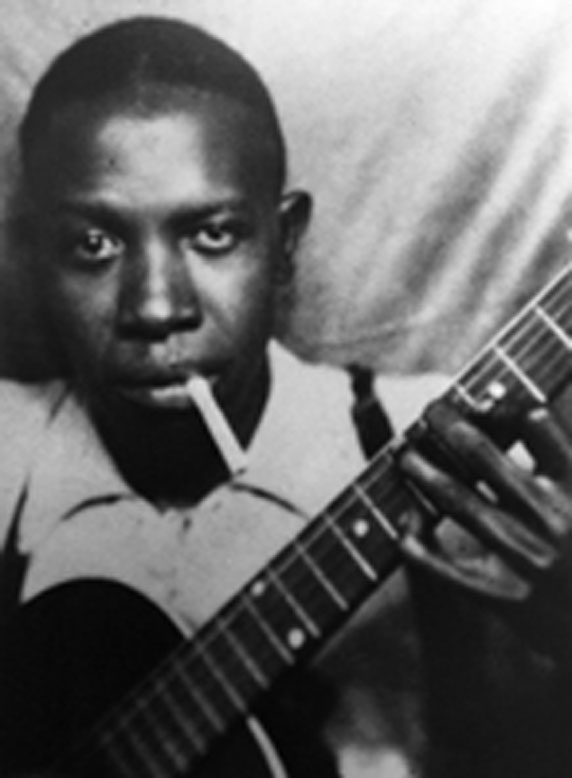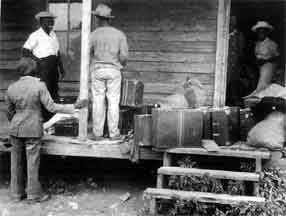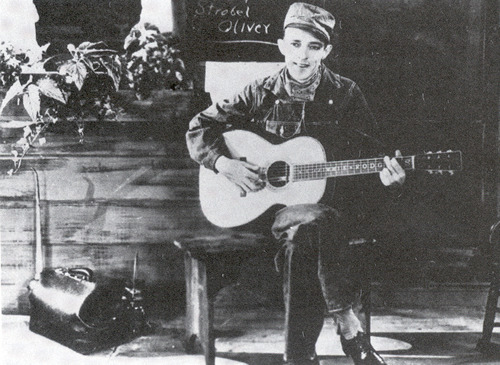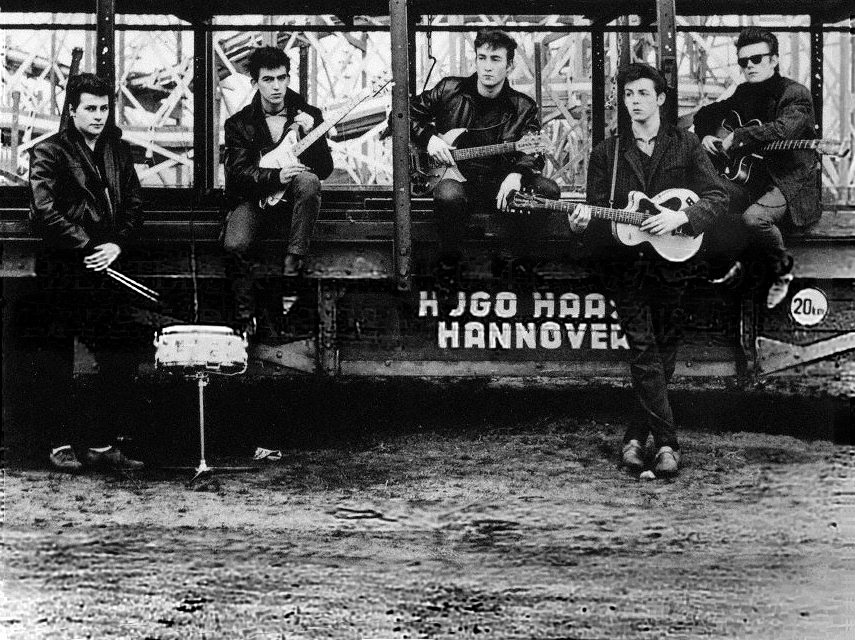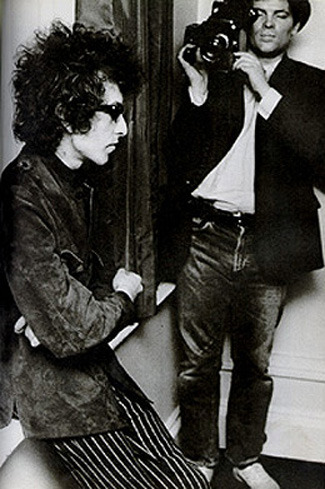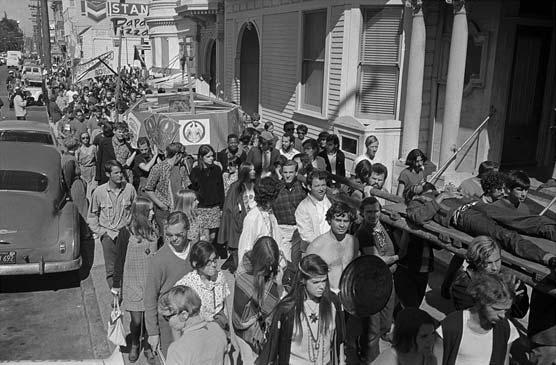Tuesday, April 24, 2012
Written Assignment 15
With the end of the Cold War, some intellectuals in the United States
pondered how the world would be shaped by a single superpower nation.
Francis Fukyama, in an essay entitled "The End of History"
(that later was expanded into a book), predicted that liberal democracy
had prevailed over all other forms of government, and that it would
remain in that position forever. After reading Part 1 and Part 2, do you
agree or disagree with Fukyama's thesis? Why?
The Road to 9/11
I. Reagan's Policy
A. The
Reagan Doctrine--Reagan had long been a proponent of "containment" of
Soviet influence, and rejected Jimmy Carter's policy of making human
rights the linchpin of foreign policy. The Reagan Doctrine was meant to
rollback Soviet influence around the world.
1.
Support for the Contras--Sandinista rebels in Nicaragua had overthrown
longtime dictator Anastocio Somoza, and were attempting to foster a
similar revolution in neighboring Salvador. The Reagan administration
began supplying arms to the Contras in the hope of destabilizing the
Nicaraguan government.
2.
The Enemy of My Enemy is My Friend--despite back channel diplomatic
efforts during the 1980 presidential election to free US hostages in
Iran, the US supported Saddam Hussein in his war against Iran, despite
his use of weapons of mass destruction (biological and chemical weapons)
against the Iranians--and dissident groups within his country.
3.
Beruit--US Marines initially sent to facilitate PLO pullout, but after
the assassination of Israeli -friendly Christian leader Bashir
Gemayel, and Israel allowing Christian forces to retaliate by
slaughtering more than 1,000 Palestinians in a refugee camp, the
initial contingent was reinforced--but rather than act as an impartial
arbitrator, US forces began shelling Muslim militia positions. The
upshot was the suicide bomb attack that killed 241 Marines--and led to
the quiet withdrawal of US forces from Lebanon.
4. Grenada--Reagan had
been planning an invasion of this tiny Caribbean nation, and after the
fiasco in Lebanon this gave him a quick victory to remove the defeat
from the newspapers.
5.
Continued support for the mujahideen--begun under Jimmy Carter after
the Soviet invasion to prop up that country's puppet regime, this policy
maintained pressure on the Soviets--and kept them engaged in an
increasingly unpopular war at home. Support for the mujahideen came from
across the Muslim world, including the son of a prominent Saudi family
by the name of Osama bin Laden.
II. Bush the Elder
A.
Patrician background--Bush's father was an investment banker and
senator from Connecticut. Bush, like his father before him--and his
sons afterward--attended Philips Andover Academy and Yale University.
B. Public Service and Private
Gain--the Bush family, more so than most, was able to make a great deal
of private gain from their public service, mainly through connections
made with business people.
1. Marriage and college--Bush's
education was interrupted by his service, which he entered soon after
graduating from Philips in 1942. Bush survived being shot down in the
Pacific, and on his return to the US at the close of the war Bush
married Barbara Pierce that year; the first child, George, as born in
1946.
2. George Bush, oilman--Bush used
family connections to make a great deal of money in the oil business in
Texas during the 1950s and early 1960s, so that he was able to retire
at the age of 40 from the oil business.
3. Bush the politician--used family
connections to finagle one of the few "safe" Republican seats in Texas
in the mid-1960s. Bush was not driven by any ideology to get into
politics; although he voted against the Civil Rights Act in 1964, he
later moderated his position on this issue. For Bush, policy positions
were merely a means to get elected.
a.
1980 Election--Bush was one of a number of Republican candidate in
1980, even going so far as labeling the economic plans of opponent
Ronald Reagan as "voodoo economics"--but when he has defeated by Reagan,
he accepted the latter's offer to become his vice-presidential
candidate.
b.
Bush's foreign policy experience--Bush was unusual as a candidate for
the executive branch, in that he had served both as an ambassador and as
the head of he CIA. His claim to have been "out of the loop" during the
Iran-Contra affair was, therefore, not very believable--and, indeed,
later evidence has proven that statement to be false.
C. Operation Desert Storm--this
brief and successful military operation left Iraq, already impoverished
by the Iran/Iraq war of the previous decade, in even worse shape, under
stringent UN sanctions (which they regularly violated, to little
effect).
III. The Clinton Years
A.
William J. Clinton--Born in Hope, Arkansas, and raised in Hot Springs,
Clinton was a graduate of Georgetown University, and a Rhodes Scholar.
He served as an elected official in Arkansas in a variety of capacities
after graduating from Yale Law School (where he met and married a fellow
law student named Hilary Rodham), eventually becoming governor of
Arkansas
B. Clinton's Foreign Policy--After
an attack with a truck bomb on the World Trade Center in New York City,
the Clinton Administration began looking for ways to strike back at
Osama bin Laden, who headed up the Al Qaeda.
1. Bosnia--the break-up of
Yugoslavia--into Slovakia, Croatia, Macedonia, and Bosnia--led to
increased ethnic tensions, which then exploded into ethnic cleansing, as
the Slovaks and Croats attempted to eliminate the ethnic Bosnians, who
were Muslim.
2. Somalia--the placement of US
troops in that unstable place in the world, to bring stability, began
under George H.W. Bush; with the murder of US troops in Mogadishu (made
famous in Black Hawk Down), led to the withdrawal of those troops.
3. Attack on the USS Cole--a suicide attack on a US warship anchored at the Yemeni port of Aden resulted in the deaths of 17 sailors.
IV. George W. Bush and 9/11
A. Early life--although born in New
Haven, Connecticut, while his father was attending Yale, Bush grew up in
Texas (although he returned east to attend boarding school and Yale,
just like father). After graduating from Yale in 1968 (at the height of
the Vietnam War), Bush was able to obtain a treasured position in the
Texas Air National Guard, which meant that he would not drafted and sent
to Vietnam. Although he failed to fulfill his obligation, he was still
able to obtain an honorable discharge, and went off to Harvard and
obtained a MBA.
B. Mid-life crisis--Bush moved back
to Texas, ran for office unsuccessfully, and then failed in a series of
business ventures. It was not until friends of his father gave him a
stake in the Texas Rangers baseball team, and made him the public face
of the team--and he was able, with their help, to threaten and cajole
the local government in the city of Arlington to build the team a new
stadium with tax payer dollars, that he became a "success." Bush then
profited from selling his share of the team, which helped him re-launch
his political career, when he beat the popular Ann Richards in the race
for governor of Texas.
C.
2000 Election campaign--Bush promised "compassionate conservatism" and
to return "honor" to the White House--and still lost the popular
election to Albert Gore. The "Brooks Brothers" riot shut down the
recount in Dade County (Miami) Florida, and the Supreme Court, in Bush v. Gore, decided that the recount should end, as well--in a 5-4 decision, along party lines.
D. George W. Bush Administration
Before 9/11--largely ineffectual, in part because Bush himself was
largely absent from the White House, on vacation--including the whole
month of August of 2001--even after he received a briefing from his
intelligence team on August 6 titled "Bin Laden Determined to Strike in
US"
Sunday, April 22, 2012
America in a Global Economy
I. Rise of the New Right – built on the ashes of the Goldwater fiasco in 1964, the Republican Party targeted white suburbanites, and particularly those suburbanites living in the South and West
A) Watergate and Its Aftermath—Although apologists for Nixon point out that—rightly—that Nixon was not the first president to abuse the power of his office to strike back at his enemies. But Nixon was the first to do this in a systematic fashion, and to use the powers of his office to attempt to subvert a criminal investigation into the attempt on the part of his campaign to fix a national election.
1) The Watergate break-in—the so-called “third-rate burglary” was an attempt to plant illegal listening devices at the headquarters of the Democratic National Committee. This was part of a much larger operation, run by the Committee to Re-elect the President (CREEP) to manipulate the Democratic primary election.
2) Agnew resignation--Vice-President Spiro Agnew resigned as part of the deal to avoid charges of bribery and extortion (settling for the charge of avoiding paying income tax on the money he accepted in bribes and extorted).
3) Nixon resignation--in August 1973 Nixon resigned, after being forced to turn over a tape revealing that he knew of the break-in and the cover-up just after they happened--and lied to his staff, his lawyers, and most importantly, to the American people on this matter.
4) Growing distrust of government--this incident, coupled with the revelations from the release of the Pentagon Papers (that the Johnson administration had lied about the basis for the war in Vietnam), fed a growing distrust of the government--so much so, that political candidates began running as "political outsiders."
B) Tax revolts – conservatives were able to use the growing distrust against government to feed a movement to choke off funds for the government, namely taxes.
1) California Proposition 13 – sold the idea that taxes merely funded wasteful government spending, particularly for things like education, welfare, and other social programs
2) Rise of “code” language – while it became unacceptable to use racial slurs in the 1970s and 1980s, this did not mean that race disappeared as an issue in American politics—only that these references to race were now used in a “code” language, like “welfare queens” and “drug lords.”
C) Christian coalitions
1) Southern Christian academies – with the implementation of Brown v. Board of Education, white Christian academies opened as a way for parents to avoid sending their children to integrated schools. The Carter administration tried to end the tax breaks these led to these various groups organizing to resist this
2) Southern televangelists – preachers like Jerry Falwell and Pat Robertson used the technology of television to expand the scope (and number of contributors to) their “mission.”
3) Reactions to gender politics
(a) Abortion – Roe v. Wade linked control of reproductive rights to a woman’s constitutionally guaranteed rights to privacy. To social conservatives, this upset gender roles and traditional patriarchy, and was considered an attack on “the right of a husband to protect the life of the child he fathered in his wife’s womb.”
(i) Opposition of Catholic Church – while the Church may not speak for all of its female members on this issue, it was able to mobilize a great deal of opposition to the decision.
(b) Opposition to the Equal Rights Ammendent – as the long sought-after ERA got closer to passage by the states, political opposition to the Amendment got more heated; this amendment would have simply recognized legally the changes that had largely already taken place in the United States. Right-wing politicians like Phyllis Schafly, Jerry Falwell were able to distort its effects and change (by comparing it to the perceived slights whites received under Affirmative Action programs) and sway public opinion about ERA enough to prevent its passage.
(c) Gay Pride movement – the Stonewall Riot in Greenwhich Village New York signaled that gays would no longer accept the harassment and stigmatization that they had received previously. As gays “came out of the closet,” however, they met increasing opposition from politicians on the Right.
D) Right turn of the Democratic Party – after the McGovern disaster of 1972 (who many party members felt was too liberal), and Carter’s victory in 1976 (who was certainly more conservative than many of the voters who voted for him), the Democratic Party became increasingly more conservative in its movement toward “the center.”
1) Disenchantment of the poor – rather than mobilize voters who had historically made up their voter base (minorities, blue collar workers, and the poor), Democrats began to compete for the same suburban voters that Republican candidates were pursuing—white suburbanites
(a) Decline of trade unions and urban machines – unions and machine politics had traditionally mobilized Democratic voters, and as these institutions declined, so did their effectiveness
(b) Capital flight--Although industry had been fleeing cities--and the increased power of labor unions there--since the Second World War, the economic malaise of the early 1970s, combined with the scrutiny the "urban problem" promoted, finally brought attention to the fact that the economy in the United States was undergoing a period of de-industrialization; by the middle of the decade, many cities in the Midwest were transformed from the Manufacturing Belt to the Rust Belt.
E) Election of Ronald Reagan – two bit actor, former president of the Screen Actors Guild, became spokesman for the vehemently anti-union General Electric Company in the 1950s, and began a rapid rightward descent.
1) Presidential policies
(a) Cut taxes – for the rich, anyway; Reagan got Congress to cut taxes for the rich from 73% to 28%, but taxes for the poor actually went up, because they were hit with an increase in state and local taxes to make up for the shortfall as a result from the decline in federal tax revenue
(b) Cut social programs – Reagan cut much spending on social programs, like welfare
(c) Increase defense spending – corporate welfare for selected industries, fed boom on the West and East coasts (see below)
(d) Results – federal tax revenues plummeted by $750 billion, and generated staggering federal deficits of $150 billion and $200 billion, which kept the prime interest rate in double digits.
F) Reagan boom – the Reagan years were beneficial for a small, select group of people, but the era was one of increasing disparity between the few rich, and the increasing number of poor
1) Growing disparity – between 1977 and 1990, the income of the richest fifth of the population grew by one-third, and that of the top one percent almost doubled; but the total income of the bottom 60 percent of Americans actually fell, and the incomes of the poorest Americans fell most sharply.
II) Reaganomics the War on Working People
A) Undermining of Unions – perhaps the greatest effect of Reaganomics was that it undermined the financial security of working-class people, by undermining the unions that represented their unions.
1) The Reagan Recession (1981-1983) – one of the first effects of supply-side economics, or “Reaganonimics,” as it came to be called, was one of the worst recessions of the post-war era.
(a) Demand from corporations for give-backs – corporations in financial trouble went to unions and its workers, and demanded concessions to remain in business. Competitors then went to their unions and workers, to demand concessions to remain competitive. The cumulative effect of this was at best to freeze the wages of working-class, and at worst to undermine the wage structure.
B) Workers in Decatur, Illinois – Decatur is a small town in central Illinois, rising out of the prairie, which had a diversified (for the Midwest) manufacturing base, but which witnessed the full aftereffects (or aftershock, to use a nuclear analogy) of Reaganomics.
1) A.E. Staley – locally-owned agricultural goods manufacturer, manufactured corn starch, corn syrup, soy products. This company resisted buyouts through the early 1980s, but by the end of the decade was bought out by a London-based food processor.
(a) Demand for 12 hour, rotating shifts – in order to more “efficiently” use its workers, management wants its workers to work twelve hour shifts, and do away with shift pay differentials; it also wants workers to move from one shift to another every other month (describe havoc this plays with lives of workers with families)
2) Firestone – the tire industry was one of the largest casualties of the merger-mania of the 1980s, and Firestone was bought by Japanese manufacturer Bridgestone.
(a) Demand for twelve-hour, rotating shifts; do away with annual pay increases—instead, have cost of living increases and productivity incentives.
(b) Provoked strike – this strike proved costly not only to many workers (who lost their jobs, some temporarily, to strikebreakers), but ultimately to the company, as well—the replacement workers manufactured the AT Wilderness tires that went on Ford Explorers.
3) Caterpillar – the industry leader in the production of heavy equipment at the time it provoked a strike by UAW members over concessions that it wanted in its contract—namely, a six-year contract, complete control over production decisions. In the end, this company handed the UAW the worst defeat in its history.
Tuesday, April 17, 2012
Written Assignment 14
The development of the counterculture was caused by several different factors. Identify at least two of these factors, and explain their significance.
The American War in Vietnam
Country Joe McDonald and the Fish at Woodstock
I) Vietminh as US allies
A) Vietminh and the OSS
1) Ho Chi Minh – Ho was a Vietnamese nationalist who admired the works of Marx, and wanted to establish a socialist state in his country
2) Vietminh armed forces – with military supplies from the US, the Vietminh fought an effective guerilla war against the Japanese.
B) Japanese surrender – when the Japanese surrendered, the Vietminh expected the US to continue to support them in their effort to establish an independent country
II) French attempt to re-colonize – the Vichy government (the government which controlled France during the Nazi occupation of that country) had surrendered to the invading Japanese, but many French rubber plantation owners had in fact cooperated with the Japanese, and were allowed to maintain their property.
A) Vietminh resistance – not surprisingly, the Vietminh resisted the attempted French re-colonization, and maintained their guerilla war against the occupying forces.
B) US aid to France – the US provided some military assistance to their NATO alliance partners, in the form of credits and some military advisers
1) Geo-political decision – the officials of the US government decided that it was more politically important, in our “Cold War” against the Soviet Union, to make nice with France in their struggle to re-assert colonial control, than to ally with a small, insignificant country with which we had no economic interest, nor any real political interest.
C) French military offensive
1) 1946 – while the Vietminh were still expecting the US to side with them in the dispute, the French forces in Vietnam were able to drive the Vietminh forces out of most of the cities in the country
D) French military defeats – after their initial victories against the Vietminh, the French suffered a series of devastating defeats; in response, the French government changed military commanders in the country.
1) “The light at the end of the tunnel” – soon after taking command of French forces, commander Gen. Henri Navarre declared that “Now we can see victory clearly, like the light at the end of the tunnel.” That is not the last time that phrase is heard in relation to conflicts in Vietnam.
2) Dien Bien Phu – in the jungle near this small hamlet, a large French force was surrounded by Vietminh forces, and after an extensive two-month siege, the Vietminh forced the French survivors to surrender on May 7, 1954.
3) Geneva Accords – at the insistence of the United States, the country of Vietnam was divided “temporarily” along the 17th Parallel, and nationwide elections to choose a government for a unified Vietnam were to be held in 1956
III) Vietnam and the Domino Theory – the so-called Domino Theory was an ideology subscribed to by both liberals and conservatives; a politician who could be portrayed as “soft on communism” effectively signed their own political death warrant.
A) Government of South Vietnam – largely a paper tiger, if not a myth. The government in South Vietnam never enjoyed any widespread popular support; if it were not for the millions and eventually billions of dollars that the US poured in to the country, it would have collapsed of its own inertia long before 1975, when the North Vietnamese Army finally rolled into Saigon. As a secret government study conducted by the Pentagon, and leaked as the famous “Pentagon Papers,” the “government” of South Vietnam was largely a creation of the United States government.
1) Premier Diem – Vietnamese Catholic, he organized a “national referendum” that led to the creation of the Republic of Vietnam. He then won a rigged election to head that government, and maintained control only with US support (eventually, that support from the US amounted to over $1 million a day)
(a) Diem’s only support in the country come from other Vietnamese Catholics (a very small percentage of the population, by the way), and other Vietnamese who had collaborated with the French
2) US $$$ -- the United States was positive that given a choice, no country would want to pass up the political and economic advantages that could be provided by alliances with the US
3) National Liberation Front – in December of 1960, the National Liberation Front was established by forces loyal to Ho in the south; they were popularly known in the US by the derogatory term given them by forces loyal to Diem in the south, Viet Cong (which became “VC” or “Charlie,” eventually, in US GI slang)
B) Kennedy and Counterinsurgency – Kennedy was elected over Richard Nixon (barely) in part because of his promise to “close the window of vulnerability” that he claimed existed and threatened the security of the US.
1) Counterinsurgency – the creation of a Special Forces branch in the Army, which supposedly would be able to respond to Communist aggression around the globe
(a) “Green Berets” – to train South Vietnamese forces in techniques of counterinsurgency, and dry up the sea of support which the National Liberation forces swam in (an allusion to an idea Mao espoused, where he compared guerilla forces to fish in a sea, undetectable among other fish.
(b) Cowboys and Indians – the Vietnamese forces were an unconventional enemy that enjoyed widespread support among the people of the rural countryside—which in Vietnam, meant most of the people living in the country.
(c) Lack of success – the lack of success that the South Vietnamese forces enjoyed in their counterinsurgency battles meant that more and more money and material was flowing into the country from the US, as were more and more military advisors, to “support” the Army of the Republic of Viet Nam (ARVN).
IV) Escalation of US Involvement
A) Gulf of Tonkin – the USS Maddox was allegedly “attacked” while offshore from North Vietnam, in disputed seas (North Vietnam claimed the area as sovereign territory, while the US maintained that the waters were international waters).
1) Gulf of Tonkin Resolution – after the alleged attack, President Johnson asked Congress for, and received, authorization from Congress to “take all necessary measures to repel armed attacks against the forces of the United States and to prevent further aggression.”
(a) Gulf of Tonkin Resolution was passed unanimously in the House, and only two dissenters in the Senate (both of whom lost in the next election that they faced.
B) Da Nang
1) USMC – on March 8, 1965, a large force of Marines landed at Da Nang to reinforce an airfield there; by March 13 the Marine expeditionary force was joined by 40,000 other troops, and by late June of that year the Army commander in Vietnam, Gen. William Westmoreland, had received authorization to commit American forces to battle wherever he saw fit.
C) The Undeclared War – as more troops were committed, soldiers and Marines from the United States began to assume more of the responsibility of the fighting in this undeclared war
1) Search and destroy missions – troops from the US forces engaged in the small troop tactic of so-called Search and Destroy missions, where platoons ventured into the jungles of Vietnam, looking for enemy to engage and hopefully kill, or at least locate so that air support could be called in. Most of the time, these patrols found nothing. The fault of these tactics was, of course, that the enemy only engaged their pursuers at the time and place of their choosing
2) The Air War – the US dropped four times the amount of bombs in Southeast Asia than were used by all belligerents during World War II; but this bombing campaign was relatively ineffective against an enemy that was fighting a low tech war anyway—there simply was not much infrastructure to destroy.
3) Weekly body count – each Friday, the military released figures of casualties, which was how the “score” was kept. Each week, the total number of casualties for the North Vietnamese Army and the National Liberation Front, which inevitably were higher than the combined totals for the United States and the ARVN—so we were winning the war, right?
4) Selective Service – because of college student deferments, the burden of service in this war fell inordinately upon the working-class; in fact, Harvard, Yale, and Princeton (the three premier universities in the country) between them only had one alumnus die. George W. attended Yale, drank his way through four years, and then conveniently “served” in the Air National Guard; Albert Gore, Jr. graduated from Princeton, and served in Vietnam—as a correspondent for Stars and Stripes, the newspaper written for members of the military.
D) Tet – Tet is the name for the Vietnamese New Year; after 1968 the word Tet is associated with the beginning of the end of US involvement in the war in Vietnam.
1) “The light at the end of the tunnel” – in January 1968, Gen. Westmoreland declared that the end of the war, now three years along in the involvement of US forces, was at hand, that officers there were confident that they were able to see the light at the end of the tunnel.
2) The Tet Offensive – just after Westmoreland made his observance about the end of the war, the National Liberation Front launched its Tet Offensive. This offensive caught the US and South Vietnamese forces completely by surprise, and NLF forces captured several cities in the south (including the center of religious life in Vietnam, Hue), and threatened to capture Saigon. The NVA had coordinated an attack at a Marine camp called Khe Shanh at this time, and held it under siege for several weeks.
3) Result – the effect of the Tet Offensive, from a military view, was a crushing defeat for the NLF and NVA; the US forces eventually defeated the combined force, and retook all of the lost territory; the NLF in particular was decimated.
(a) The end of US involvement – it became obvious to even the most casual observers that the end of the war was no where close to happening; popular support for continued US involvement in the war began to shift dramatically from this point.
(b) This was less a result of the growing protest movement, but increased frustration on the part of the general public at the apparent stalemate in the war
I) Vietminh as US allies
A) Vietminh and the OSS
1) Ho Chi Minh – Ho was a Vietnamese nationalist who admired the works of Marx, and wanted to establish a socialist state in his country
2) Vietminh armed forces – with military supplies from the US, the Vietminh fought an effective guerilla war against the Japanese.
B) Japanese surrender – when the Japanese surrendered, the Vietminh expected the US to continue to support them in their effort to establish an independent country
II) French attempt to re-colonize – the Vichy government (the government which controlled France during the Nazi occupation of that country) had surrendered to the invading Japanese, but many French rubber plantation owners had in fact cooperated with the Japanese, and were allowed to maintain their property.
A) Vietminh resistance – not surprisingly, the Vietminh resisted the attempted French re-colonization, and maintained their guerilla war against the occupying forces.
B) US aid to France – the US provided some military assistance to their NATO alliance partners, in the form of credits and some military advisers
1) Geo-political decision – the officials of the US government decided that it was more politically important, in our “Cold War” against the Soviet Union, to make nice with France in their struggle to re-assert colonial control, than to ally with a small, insignificant country with which we had no economic interest, nor any real political interest.
C) French military offensive
1) 1946 – while the Vietminh were still expecting the US to side with them in the dispute, the French forces in Vietnam were able to drive the Vietminh forces out of most of the cities in the country
D) French military defeats – after their initial victories against the Vietminh, the French suffered a series of devastating defeats; in response, the French government changed military commanders in the country.
1) “The light at the end of the tunnel” – soon after taking command of French forces, commander Gen. Henri Navarre declared that “Now we can see victory clearly, like the light at the end of the tunnel.” That is not the last time that phrase is heard in relation to conflicts in Vietnam.
2) Dien Bien Phu – in the jungle near this small hamlet, a large French force was surrounded by Vietminh forces, and after an extensive two-month siege, the Vietminh forced the French survivors to surrender on May 7, 1954.
3) Geneva Accords – at the insistence of the United States, the country of Vietnam was divided “temporarily” along the 17th Parallel, and nationwide elections to choose a government for a unified Vietnam were to be held in 1956
III) Vietnam and the Domino Theory – the so-called Domino Theory was an ideology subscribed to by both liberals and conservatives; a politician who could be portrayed as “soft on communism” effectively signed their own political death warrant.
A) Government of South Vietnam – largely a paper tiger, if not a myth. The government in South Vietnam never enjoyed any widespread popular support; if it were not for the millions and eventually billions of dollars that the US poured in to the country, it would have collapsed of its own inertia long before 1975, when the North Vietnamese Army finally rolled into Saigon. As a secret government study conducted by the Pentagon, and leaked as the famous “Pentagon Papers,” the “government” of South Vietnam was largely a creation of the United States government.
1) Premier Diem – Vietnamese Catholic, he organized a “national referendum” that led to the creation of the Republic of Vietnam. He then won a rigged election to head that government, and maintained control only with US support (eventually, that support from the US amounted to over $1 million a day)
(a) Diem’s only support in the country come from other Vietnamese Catholics (a very small percentage of the population, by the way), and other Vietnamese who had collaborated with the French
2) US $$$ -- the United States was positive that given a choice, no country would want to pass up the political and economic advantages that could be provided by alliances with the US
3) National Liberation Front – in December of 1960, the National Liberation Front was established by forces loyal to Ho in the south; they were popularly known in the US by the derogatory term given them by forces loyal to Diem in the south, Viet Cong (which became “VC” or “Charlie,” eventually, in US GI slang)
B) Kennedy and Counterinsurgency – Kennedy was elected over Richard Nixon (barely) in part because of his promise to “close the window of vulnerability” that he claimed existed and threatened the security of the US.
1) Counterinsurgency – the creation of a Special Forces branch in the Army, which supposedly would be able to respond to Communist aggression around the globe
(a) “Green Berets” – to train South Vietnamese forces in techniques of counterinsurgency, and dry up the sea of support which the National Liberation forces swam in (an allusion to an idea Mao espoused, where he compared guerilla forces to fish in a sea, undetectable among other fish.
(b) Cowboys and Indians – the Vietnamese forces were an unconventional enemy that enjoyed widespread support among the people of the rural countryside—which in Vietnam, meant most of the people living in the country.
(c) Lack of success – the lack of success that the South Vietnamese forces enjoyed in their counterinsurgency battles meant that more and more money and material was flowing into the country from the US, as were more and more military advisors, to “support” the Army of the Republic of Viet Nam (ARVN).
IV) Escalation of US Involvement
A) Gulf of Tonkin – the USS Maddox was allegedly “attacked” while offshore from North Vietnam, in disputed seas (North Vietnam claimed the area as sovereign territory, while the US maintained that the waters were international waters).
1) Gulf of Tonkin Resolution – after the alleged attack, President Johnson asked Congress for, and received, authorization from Congress to “take all necessary measures to repel armed attacks against the forces of the United States and to prevent further aggression.”
(a) Gulf of Tonkin Resolution was passed unanimously in the House, and only two dissenters in the Senate (both of whom lost in the next election that they faced.
B) Da Nang
1) USMC – on March 8, 1965, a large force of Marines landed at Da Nang to reinforce an airfield there; by March 13 the Marine expeditionary force was joined by 40,000 other troops, and by late June of that year the Army commander in Vietnam, Gen. William Westmoreland, had received authorization to commit American forces to battle wherever he saw fit.
C) The Undeclared War – as more troops were committed, soldiers and Marines from the United States began to assume more of the responsibility of the fighting in this undeclared war
1) Search and destroy missions – troops from the US forces engaged in the small troop tactic of so-called Search and Destroy missions, where platoons ventured into the jungles of Vietnam, looking for enemy to engage and hopefully kill, or at least locate so that air support could be called in. Most of the time, these patrols found nothing. The fault of these tactics was, of course, that the enemy only engaged their pursuers at the time and place of their choosing
2) The Air War – the US dropped four times the amount of bombs in Southeast Asia than were used by all belligerents during World War II; but this bombing campaign was relatively ineffective against an enemy that was fighting a low tech war anyway—there simply was not much infrastructure to destroy.
3) Weekly body count – each Friday, the military released figures of casualties, which was how the “score” was kept. Each week, the total number of casualties for the North Vietnamese Army and the National Liberation Front, which inevitably were higher than the combined totals for the United States and the ARVN—so we were winning the war, right?
4) Selective Service – because of college student deferments, the burden of service in this war fell inordinately upon the working-class; in fact, Harvard, Yale, and Princeton (the three premier universities in the country) between them only had one alumnus die. George W. attended Yale, drank his way through four years, and then conveniently “served” in the Air National Guard; Albert Gore, Jr. graduated from Princeton, and served in Vietnam—as a correspondent for Stars and Stripes, the newspaper written for members of the military.
D) Tet – Tet is the name for the Vietnamese New Year; after 1968 the word Tet is associated with the beginning of the end of US involvement in the war in Vietnam.
1) “The light at the end of the tunnel” – in January 1968, Gen. Westmoreland declared that the end of the war, now three years along in the involvement of US forces, was at hand, that officers there were confident that they were able to see the light at the end of the tunnel.
2) The Tet Offensive – just after Westmoreland made his observance about the end of the war, the National Liberation Front launched its Tet Offensive. This offensive caught the US and South Vietnamese forces completely by surprise, and NLF forces captured several cities in the south (including the center of religious life in Vietnam, Hue), and threatened to capture Saigon. The NVA had coordinated an attack at a Marine camp called Khe Shanh at this time, and held it under siege for several weeks.
3) Result – the effect of the Tet Offensive, from a military view, was a crushing defeat for the NLF and NVA; the US forces eventually defeated the combined force, and retook all of the lost territory; the NLF in particular was decimated.
(a) The end of US involvement – it became obvious to even the most casual observers that the end of the war was no where close to happening; popular support for continued US involvement in the war began to shift dramatically from this point.
(b) This was less a result of the growing protest movement, but increased frustration on the part of the general public at the apparent stalemate in the war
Sunday, April 15, 2012
Rock and Roll and the Counterculture
I) Working-class in the South
A) African Americans
1) Sharecroppers in the Mississippi Delta – the Delta area covered much of northwestern Mississippi, between the Mississippi and Yazoo Rivers, and was the area in the state most devoted to the cultivation of cotton, and therefore had a high concentration of descendents of former slaves in the area.
2) Musical traditions – work songs, which helped regulate the pace of labor (as well as help the time pass more quickly); sacred music; both forms used “call and response.”
3) Itinerant musicians – the Delta area, before the advent of the juke box and radio, had a tradition of musicians who traveled from plantation to plantation to play music for Saturday night fish fries, and at “juke joints.” For many men (and a few women), this was the only chance for them to avoid a life of back-breaking, ill-paying labor
(a) Charley Patton
(b) Robert Johnson – became a big star twenty years after his death, when recording of twelve of his songs became the visible sign of “hipness”
(c) Huddie “Leadbelly” Ledbetter
(d) B.B. King
(e) Muddy Waters
(f) Howlin’ Wolf
4) Movement off farms into cities – so-called “chain” migration—migrants often first moved into cities in the South, and then into cities in the North from there
(a) Pull of wartime employment – as jobs opened up to African Americans in factories and docks in the North, many left farms to fill these jobs in the North.
(b) Push of mechanization – after the war, cotton cultivation became increasingly mechanized, which meant that it was cheaper for large landowners (plantation owners) to buy tractors, cultivators, etc., and dismiss their sharecroppers—which in turn meant that these sharecroppers were forced to move off the land that they had cultivated; many chose to move into cities.
B) Poor white southerners – segregation, that we think of as personifying life in the South (and in the North, for that matter), is really an urban phenomenon than something that takes place in a rural environment; poor southern whites often found themselves in similar situations as their African American neighbors.
1) Tenant farmers – depressed farm prices had earlier forced many tenant farmers off farms and into cities, north and south.
(a) Secular – “hillbilly” music; without radio, many people had to entertain themselves, and their neighbors. White musicians in the south had a long tradition of learning music from their African American neighbors
(b) Sacred – prevalence of Pentecostal religions in the South (both white and black) meant that adherents to these various sects were familiar with emotionally charged music, from their church services.
3) Movement off farms and into cities – for many of the same reasons that African Americans moved into cities; same kind of chain migration as was the case with African Americans.
(a) Wartime employment
(b) Mechanization of farming in the south
II) Radio – radio became the vehicle for popularizing “race” music among a wider audience
A) Clear Channel Stations – (not those of the company of today) in the late 1940s and 1950s, there were a number of 50,000-watt (the largest the government would allow) stations that could be heard (best at night) over much of the country—the so-called “clear channel” stations.
1) WDIA—white-owned radio station in Memphis that began playing “race” music, and featured African American radio personalities, including Riley “Blues Boy” King (better known to us today as B.B. King) and Rufus Thomas, both of who became well-known performers of blues and rhythm and blues (R & B) music.
2) WHBQ – white-owned radio station in Memphis began playing “race” music at night for the African American audience in the city, and as a result a number of white audience members were exposed to the music, as well. DJ Dewey Phillips’ nightly show, “Red, Hot and Blue” became a particular favorite.
3) WLAC – Nashville record station, where a local business, Randy’s Record Mart (which did a big mail-order business), sponsored a blues radio show at night. The owner also owned Dot Records, which began releasing recordings of popular r&b songs redone by white artists—in particular, Pat Boone (whose first big hit was “Ain’t That a Shame”)
B) Sam Phillips and Sun Records
1) Sam Phillips – white engineer opened Memphis Recording Service, and began to seek out local African American talent to record. Phillips quickly became frustrated at the limited sales that the race music was able to attain, and he begins to seek out a white singer to perform music in this style.
(a) How does Phillips know that such a person exists? – because he himself enjoys such music, and is confident that other white southerners feel the same way, and are performing such music out there somewhere.
III) Elvis
A) Childhood – Elvis was an only child (his twin brother, in fact, died soon after he was born) brought up by a doting, domineering mother and a largely absent father.
1) Pentecostal church upbringing – Elvis attended sanctified churches with his parents, where he would have been exposed to the emotionally charged services that these churches are known for.
2) Working-class upbringing – Elvis’ childhood was rather economically distressed, his father worked a series of rather low paying jobs. Elvis grew up in Tupelo, MS, and although the public schools that he attended were segregated, and the public facilities (theaters, restrooms, etc.) were segregated by race, the town itself was only segregated by income.
3) Father imprisoned – when Elvis was growing up, his father was imprisoned for several years after an attempted robbery, which did not affect the social standing of the family in the city, but only confirmed their outsider status there.
B) Move to Memphis – some time after his father was released from prison, the Presley family moved from Tupelo to Memphis, where Elvis eventually graduated from high school, and held down several rather low-paying jobs driving trucks.
C) Recording of song for mother – to surprise his mother on her birthday, Presley recorded a song at the Memphis Recording Service—which led eventually to his being courted by owner Sam Phillips to record some music with two musicians that he had worked with
D) The Sun Records years – (both of them) Elvis cut only six singles with Sun, but they changed popular music forever.
1) The marriage of white and black sensibilities – Elvis was able to cross boundaries that were thought to be impossible to cross; it was probably no accident that his first successful recording included a countrified version of a rhythm and blues hit, and a rhythm and blues treatment of a country hit.
2) Elvis’ demeanor
(a) Loved “loud” clothing (bought at Lansky Brothers, which catered to a largely African American clientele); and he favored pink particularly (which at that time was not a color that most men would have been caught out in public in).
(b) Use of make-up – like Little Richard (although perhaps for different reasons), Elvis used make-up (eye-liner and eye-shadow) not only when he was performing, but in everyday life.
(i) Explanation of Elvis androgynous appeal – males tended to like Presley’s music, if not his performance style (which females reacted to vociferously)
3) Inspiration of others – many other white performers followed Presley to Sun Records, and eventually to other record companies, as well
IV) Race, Class, and Rock ‘n Roll
A) Chuck Berry—Berry was in many ways the mirror image of Elvis Presley, although he was much more talented as a musician than Presley was.
1) Childhood—Berry was born into a middle class family in St. Louis. Despite that, he was convicted at age 18 of armed robbery, and spent a year in prison between 1946 and 1947. After his release, he settled into married life, working for a time in an automobile factory before becoming a hair dresser.
2) Musical career—Berry was able to get hired as a guitarist for a popular St. Louis “jump blues” group, the Johnny Johnson trio. After breaks in the clubs they played, Berry would sometime entertain the crowd with “bluesified” versions of country music numbers then popular on the radio. When Johnson left St. Louis to pursue a recording career with the Chess Record Company in Chicago, Berry took over leadership of the group.
3) Chess Records—was owned by two Polish-American brothers, Leonard and Phil Chess. The company specialized in blues, rhythm and blues, and gospel records, aimed at an African American audience. The Chess brothers developed a business relationship with Sam Phillips, and handled some of the overflow from Sun Records. When Elvis hit, the Chess brothers were inspired to seek similar talent of their own.
B) The Day the Music Died
1) February 1958 – Buddy Holly, Richie Valens, and The Big Bopper die in plane crash in Iowa
2) Jerry Lee Lewis – brought down by his marriage to his 14 year old cousin
3) Chuck Berry – convicted of violation of the Mann Act (transporting a 14 year old across state lines for illicit purpose).
4) Elvis – drafted, enters service, and out of the limelight for two years (his transportation of a 12 year old across international borders received little notice); after his hitch is done he concentrated on movies.
C) Re-invention of rock--these events in 1958 are seen as the end of rock's first era. The Top 40 charts from 1958 to 1963 were dominated by pop music--particularly by male singers produced by Bob Marcucci in Philadelphia and girl groups produced by Phil Spector in New York City. Oh, and a whole host of African Americans on a record label called Motown, out of Detroit
I) The Rebirth of Rock – the years between 1958 (when Elvis went into the army) and 1963 (when the Beatles broke in the United States) have been portrayed as the low point of rock history, but in reality it was the time when black do-wop groups ruled—except for the white teen idols (Fabian, Frankie Avalon—who appealed to the American Bandstand crowd)
A) Beatles – undoubtedly, the most influential group of musicians in the years after 1950. How many band members in the 1960s and 1970s recounted their first exposure to the Beatles as the beginning of their career in music?
1) Liverpool – in the 1950s, Liverpool was a depressed seaport, with piles of rubble left over from the destruction of WWII, but it supported a huge music scene.
(a) Skiffle – an English interpretation of American folk music (songs like Rock Island Line, etc.). Its biggest star, Lonnie Donegan, performed with more enthusiasm than talent—but that was just the point, and this music inspired hundreds of young people to get a guitar and form a band.
(b) Muddy Water – inspired many of the same young people to perform with amplified music
(c) Search for authenticity – appreciation for indigenous cultural artifact from another culture (namely music) a sign of cosmopolitanism—of “hipness.”
2) Brian Epstein – scion of a family that owned a regional chain of department stores; bored, and afraid that a convicted felon due for release soon would “out” him. Epstein knew little about music, but was a promotional genius.
(a) Cleaning up the Beatles image – before Epstein, the Beatles dressed in black and leather. Epstein prevailed on the band to wear suits and neckties—although they kept the “French cuts” (long hair).
(b) Beatles came across as pleasant, intelligent young men, just cheeky enough to appeal to their generation, but not threatening enough that mother would ban them from the house.
(i) This, of course, left the door open for a band to emerge with a more raucous sound and a dirtier image—namely, the Rolling Stones.
(ii) Beatles themselves were loud and raucous, and they brought a new sense of style to rock and roll that the Rolling Stones also followed—a sense of campiness, that all of this was done as kind of an inside joke, which only “insiders” could pick up on.
3) Do It Ourselves – Lennon and McCartney were determined that their band would perform songs mainly written by themselves—a break with past traditions (for instance, although Elvis Presley received song publishing credit, he didn’t really write any songs himself).
II) Bob Dylan
A) Robert Zimmerman – a bright Jewish kid growing up in Hibbing, Minnesota, listening to black r & b on the radio, as well as country music.
1) University of Minnesota – Zimmerman after high school attended school in Minneapolis, where he discovered what passed for the “bohemian” crowd there, and he began developing the Bob Dylan persona.
(a) Re-emergence of the folk music movement – Folk music first emerged in the early 1950s, but was quashed in the Red Scare led by McCarthy; with McCarthy’s fall, folk re-emerges
(i) Woody Guthrie – Guthrie, a member of the Weavers along with Pete Seeger, cannot re-emerge with the movement he helped inspire because he is stricken with Parkinson’s disease. Dylan, by this time, has copied Guthrie’s repertoire (as well as his style of delivery).
2) Move to New York – after his sophomore year, Dylan moved to New York (really the only city one could make a living as a folk musician); Dylan assumes Guthrie’s mantle, and develops his own repertoire of songs, while retaining much of the persona he appropriated from Guthrie.
3) Stardom – Dylan quickly established himself as the biggest fish in a rather small pond (Joan Baez, Peter, Paul, & Mary, Pete Seeger, etc.), which was good enough until the Beatles arrived.
III) Beatlemania
A) UK – the Beatles built a solid following in the United Kingdom, particularly among young girls, who tended to scream during the entire set (which had gotten shorter, at the insistence of Epstein—about twenty-five minutes, on average).
1) Three things set Beatles apart
(a) Furious energy
(b) Care and diligence that Lennon and McCartney brought to developing their own songs
(c) Demand that they be able to create their own “art”
B) “Phony Beatlemania” – the storied “conquering” of the US is much more complicated than is generally known.
1) Screaming crowds – were hired by Brian Epstein, who also massaged members of the press to spin favorable stories about the band.
2) Successful tour – the initial tour in 1963 was successful, but the Beatles did not initially take the country by storm.
3) “Hard Days Night” – a pseudo-documentary of a day in the life of the band, full of them being chased by young women, and being cute and cuddly. Film was released in 1964, and the band toured US after its release—when the Beatlemania was anything but phony (after American kids were shown how they should act).
4) Critical acceptance – perhaps the most important distinction between rock’s rebirth and its initial creation was that it was an acceptable musical form, particularly as it was performed by the Beatles (not that there was not some opposition to the long-haired freaks, but it was much less vehement the second time around).
IV) Dylan Meets the Beatles
A) Dylan Tours UK – Dylan toured the UK in early 1964, where he was treated by audiences like a rock star—like the Beatles. In fact, Dylan was greatly influential upon the Beatles, who admired his songwriting ability. Dylan, for his part, admired the audience the Beatles were attracting.
1) “I Wanna Hold Your Hand” – Beatles hit, which became ubiquitous in the US in 1964, and which Dylan thought contained the lyrics “Your love, I get High! I get high! I get high!” (instead of “can’t hide”). This becomes an issue of greater amusement after Dylan introduced the Beatles to marijuana in August of 1964. Inserted into one of the songs on the subsequent album, Rubber Soul, was the “I get high!” lyric in the song “It’s Only Love.”
B) Dylan goes electric – in an effort to broaden his audience, upon his return from England Dylan recorded his last acoustic album for many years, Another Side of Bob Dylan, which contained only one overtly political song. In May 1965 he released his first electric album, Bringing It All Back Home, which contained “Subterranean Homesick Blues” which, although a modest success in the US, became his second top ten hit in the UK
1) 1965 Newport Folk Festival – although Dylan was not booed off the stage at Newport while performing with members of the Paul Butterfield Blues Band, his reception was less than enthusiastic, and he pulled the plug after performing only two or three songs (perhaps having more to do with his stoned state than the audience)
(a) Dylan and drug use – Dylan, in an effort to “get to the depths of where you are at” (whatever that means), was increasingly relying upon drugs, particularly marijuana, to get there.
2) 1965 Dylan UK tour – his performance style was becoming increasingly hostile (he refused to perform earlier songs), and his reception there was much less ecstatic than before.
V) Haight-Asbury
A) The Acid Test
1) Ken Kesey and the Merry Pranksters—and LSD
Subscribe to:
Posts (Atom)



















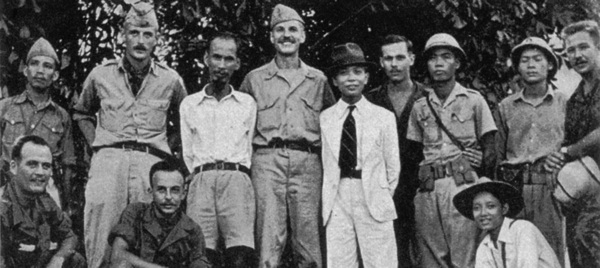


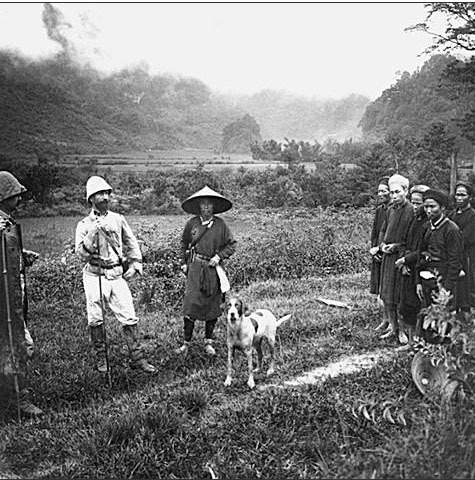

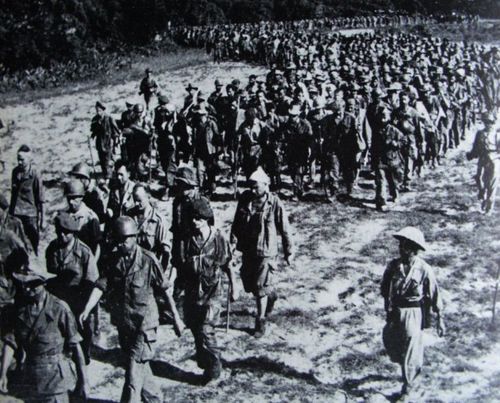



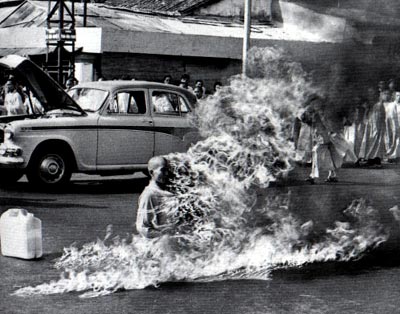
.jpg)




